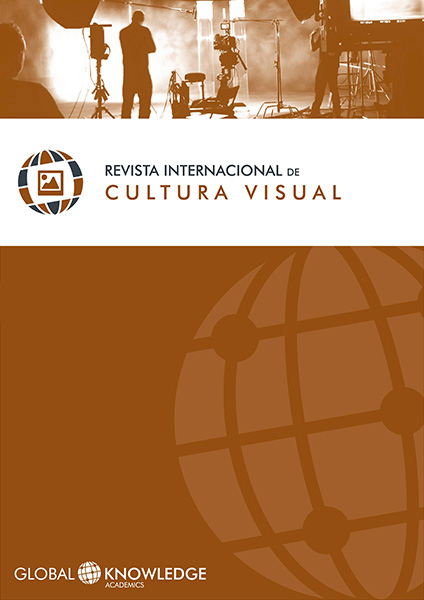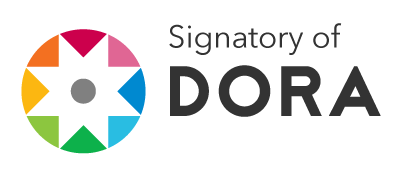The Spatial Communication and its Materialization in Brazilian Visual Arts
DOI:
https://doi.org/10.37467/gka-revvisual.v3.238Keywords:
Spatial Communication, Brazil, MaterializationAbstract
Reflections on the foundations and development of a tradition in Brazilian visual arts: the materialization of a non discursive spatial communication through some artworks from Hélio Oiticica (1937-1980), Ernesto Neto (1964-), and Maurício Panella (1973-).
Downloads
Global Statistics ℹ️
|
530
Views
|
393
Downloads
|
|
923
Total
|
|
References
Amoroso, L. (2000). Ratio & Aesthetica: la nascita dell´estetica e la filosofia moderna. Pisa, Itália: ETS.
Anjos, M. dos. (2010). As dobras, as voltas, os acúmulos e os vazios do trabalho. Em M. dos Anjos. Crítica (pp. 115-123). Rio de Janeiro, Brasil: Automática.
Baumgarten, A. G. (2007). Aesthetik - 1750. Hamburg, Alemanha: Felix Meiner.
Bourriaud, N. (2001). Esthétique relationnele. Paris, França: Les Presses du réel.
Braga, P. (2008). Conceitualismo e vivência. Em P. Braga (Ed.). Fios soltos: a arte de Hélio Oiticica. (pp. 259-276). São Paulo, Brasil: Perspectiva.
Cauquelin, A. (2007). A invenção da paisagem. São Paulo, Brasil: Martins Fontes.
Debord, G. (2003). Teoria da Deriva 1956. Em Jacques, P.B (Ed.) Apologia da Deriva: Escritos situacionistas sobre cidade. (pp.87-91). Rio de Janeiro, Brasil: Casa da Palavra.
Gally, M. (2008). Displacements of Creative Activity in Brazilian Visual Arts. Proceedings of the 14th International Symposium Electronic Art - ISEA 2008 (pp. 181-182). Singapura, Singapura: ISEA 2008 Pte Ltd.
Gally, M. (2010). O sensível contemporâneo e a questão do espaço: Reflexões a partir do ambiente das artes visuais. Em F. Soulages (Ed.), O sensível contemporâneo. Salvador, Brasil: Editora Universidade Federal da Bahia.
Gally, M. (2015). A (des)importância do espaço para pensar as artes visuais: entre Heidegger e o Ambiente da Arte”. Revista Ideação, (31), 125-147. http://www.revistaideacao.com.br/ DOI: https://doi.org/10.13102/ideac.v1i31.1310
Jacques, P. B. (2001). Estética da Ginga: arquitetura das favelas através da obra de Hélio Oiticica. Rio de Janeiro, Brasil: Ed. Casa da Palavra.
Jacques, P. B. (2008). Parangolés de Oiticica/Favelas de Kawamata. Em P. Braga (Ed.). Fios soltos: a arte de Hélio Oiticica. (pp. 153-168). São Paulo, Brasil: Perspectiva.
Neto, E. (2011). Entrevista. Programa Museu Vivo, SESC TV. Disponiblizado pela emissora em 5.02.2014 em https://www.youtube.com/watch?v=ZZmJchHWpDw.
Oiticica, H. (1986). A dança na minha experiência - 1965. Em H. Oiticica, Aspiro ao grande labirinto. (pp. 72-76). Rio de Janeiro, Brasil: Rocco.
Oiticica, H. (1960-66) Núcleos (1964-66) Parangolés e Penetráveis (Tropicália, 1961-67). Ver registros de exposições retrospectivas na Tate Gallery e Museo Reina Sofia: http://www.tate.org.uk/whats-on/tate-modern/exhibition/helio-oiticica/helio-oiticicaexhibition-guide/helio-oiticica-4; http://www.museoreinasofia.es/en/activities/heliooiticica. Ver ainda sítio oficial Projeto Hélio Oiticica – Rio de Janeiro, Brasil: http://www.heliooiticica.org.br/obras/obras.php. Consultados em 25.11.2015.
Panella, M., Fidelis, M. e Gally, M. (2015). Arte como conhecimento do mundo na metodologia criativa e pedagógica do Projeto De fora adentro – Cartografias dos Sentidos. Revista Estética e Semiótica, 5(1), 51-60. http://periodicos.unb.br/index.php/esteticaesemiotica/article/view/15701/11146. DOI: https://doi.org/10.18830/issn2238-362X.v5.n1.2015.03
Plaza, J. (2003). Arte e Interatividade: Autor-Obra-Recepção - 1990. Ars, 1(2), 9-29. DOI: https://doi.org/10.1590/S1678-53202003000200002
Shiner, L. e Kriskovets, Y. (2007). The Aesthetics of Smelly Art. Journal of Aesthetics and Art Criticism, 65(3), 273-286. DOI: https://doi.org/10.1111/j.1540-594X.2007.00258.x
Volz, J. (2008). Ernesto Neto. Em A. Pedrosa (Ed.). Através: Inhotim – Catálogo (pp.124-127). Brumadinho, Brasil: Instituto Cultural Inhotim.
Downloads
Published
How to Cite
Issue
Section
License
Those authors who publish in this journal accept the following terms:
-
Authors retain copyright.
-
Authors transfer to the journal the right of first publication. The journal also owns the publishing rights.
-
All published contents are governed by an Attribution-NoDerivatives 4.0 International License.
Access the informative version and legal text of the license. By virtue of this, third parties are allowed to use what is published as long as they mention the authorship of the work and the first publication in this journal. If you transform the material, you may not distribute the modified work. -
Authors may make other independent and additional contractual arrangements for non-exclusive distribution of the version of the article published in this journal (e.g., inclusion in an institutional repository or publication in a book) as long as they clearly indicate that the work was first published in this journal.
- Authors are allowed and recommended to publish their work on the Internet (for example on institutional and personal websites), following the publication of, and referencing the journal, as this could lead to constructive exchanges and a more extensive and quick circulation of published works (see The Effect of Open Access).













